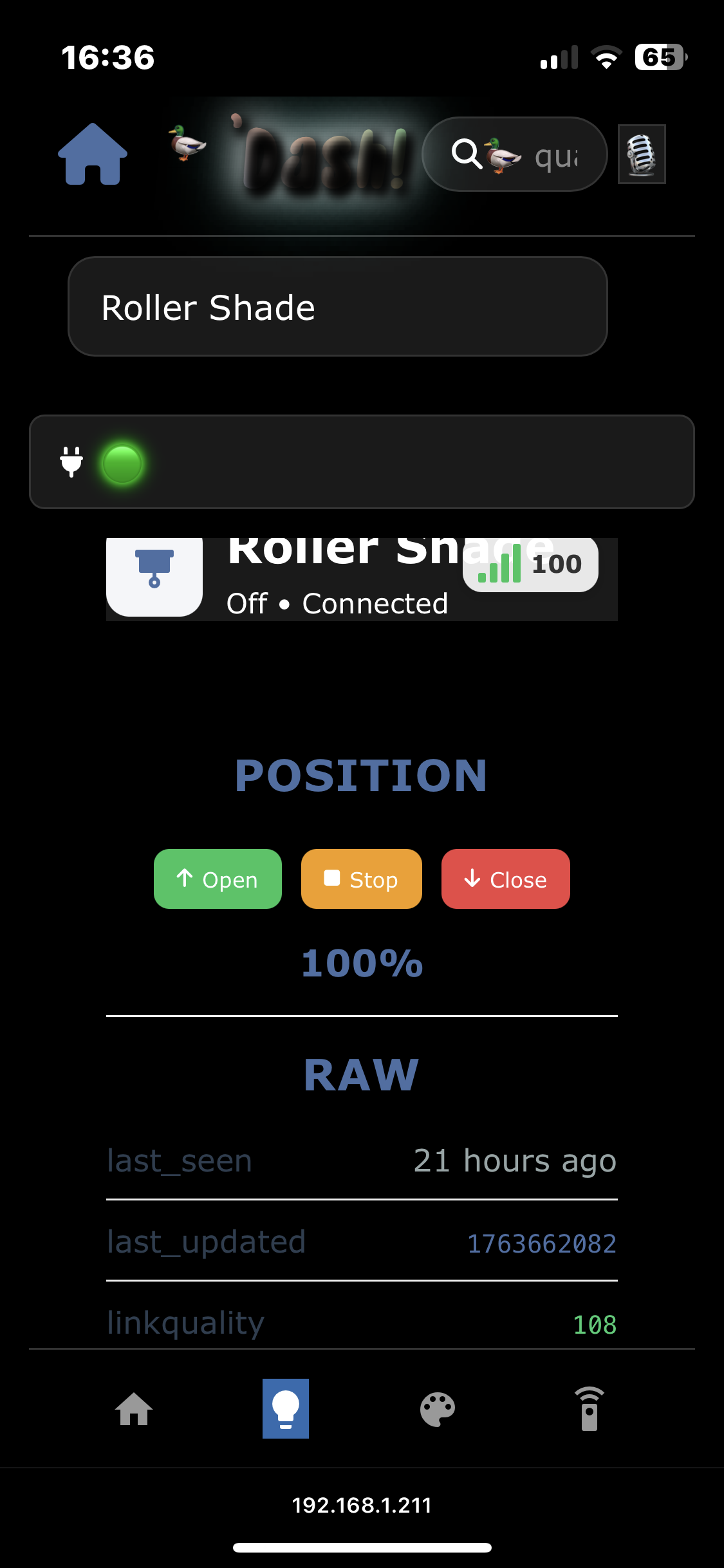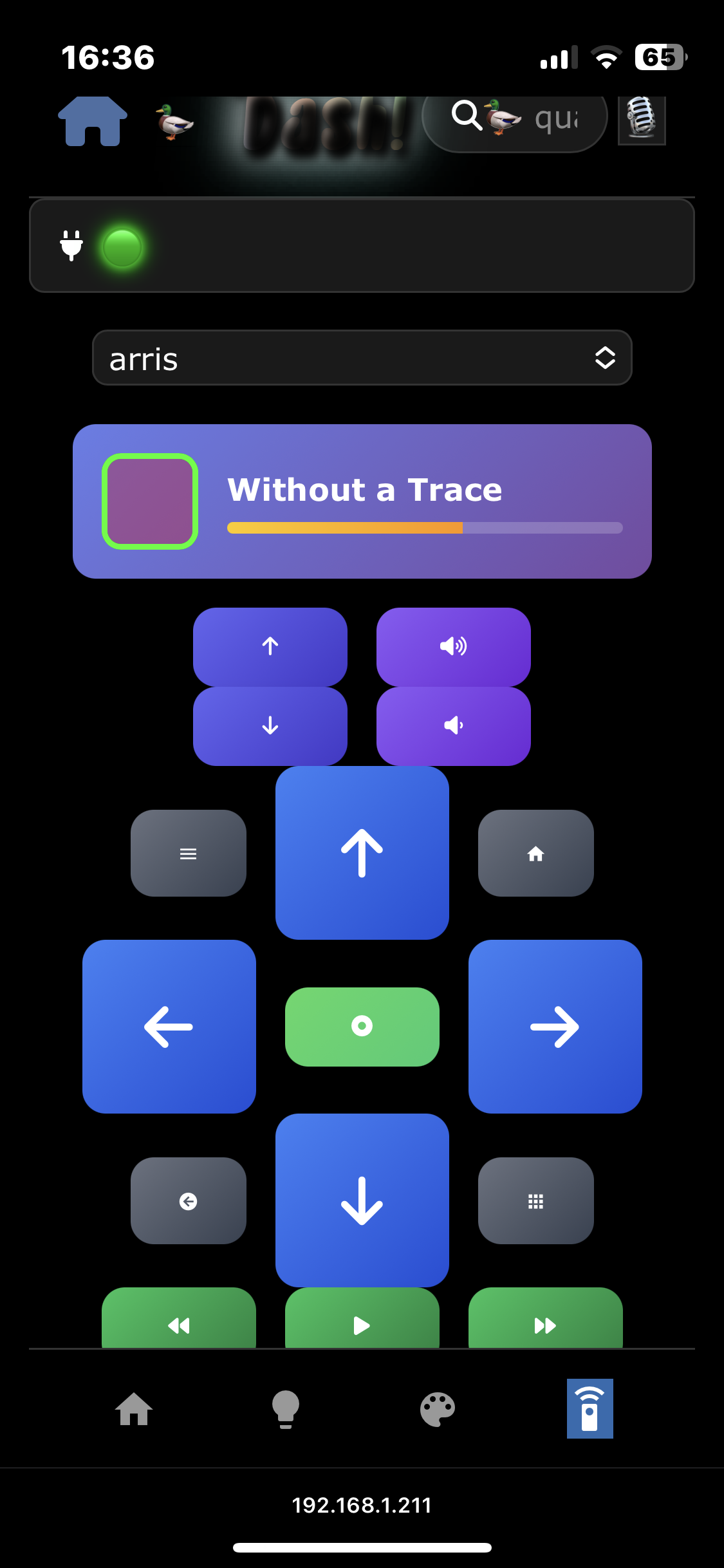Defining Your Home
Part 6 - The Automatically Generated Dashboard
says ⮞ I use 20x magnification when I code and debug. I use emoji to simplify logs for myself. If you can't handle my code style you can disable most of it on this website by toggling the button in the navbar. Shall duck continue?
Contribute
I'm not really an dashboard kind of guy, but I understand it can have great uses on phone when away.If you feel like this dashboard is insufficient, feel free to contribute.
Automagi Dashboard
This is all automatically generated.
Connected to Mosquitto over WebSockets.
The gradient image for each scene is dynamically fetched from every device's color in the scene.
I think that's my favourite feature in this slimmed dashboard.
It also let's you control defined TV's through a remote page.
Gallery & Video





×
❮
❯
![]()
⮞ if any JS yoda wanna help out...
Today's Lesson
The dashboard only comes with one built-in status card, which displays the temperature from your sensors.Today I am going to show you how easy it is to configure custom status cards for the home page of the dashboard.
For simplicity let's assume you have a energy price script - which data you'd like to publish and display as a status card.
Let's say it looks something like this:
⮞ View Message Processing Handler
mqtt_publish \ -h 192.168.1.111 \ # 🦆says⮞ MQTT broker IP -u mqtt \ # 🦆says⮞ MQTT user -p "$(cat /run/secrets/mosquitto)" \ # 🦆says⮞ password file -t zigbee2mqtt/energy/price \ # 🦆says⮞ MQTT topic -m "{\"current_price\": \"$CURRENT_PRICE\"}" # 🦆says⮞ MQTT message with variable containing the price data

Comments on this blog post